Stormy Weather Reading
Autumn reading is coming your way a bit late this year since today is the 1st December, so I have re-titled. Stormy weather has continued into winter, it seems… So the best thing for everyone to do is settle down with a good book whenever possible. And here are some great options:)
The Secret Room by Jane Casey ****
For an entire series, Maeve and Josh have been caught in an exhilarating web of sexual tension, and this continues nicely in ‘The Secret Room’.
Maeve is investigating the murder of a woman in an up-market hotel (she was found in a bath of boiling water; dead, of course 😉) and lo and behold, Josh is also on the case. Meantime, his personal life is unravelling. His partner Mel is found a victim of a vicious assault and he is suspect number one. Despite being ordered not to, Maeve is compelled to step in and do her own investigating. She knows Josh and she knows he could not have committed such a crime. But people do uncharacteristic things when pushed to breaking point. Could he have? Would he have? And can Maeve find out the truth?
Jane Casey juggles all the skittles of these two cases, along with the personal lives of her key players in her usual skilful way. The book is expertly written and structured, and totally gripping. As always, the characters jump off the page and into the reader’s heart and mind. Highly recommended.
When I First Held You by Anstey Harris **** +
Anstey Harris mentions in her acknowledgements that this story of adoption, of secrets and lies, love and betrayal, was inspired by her own family history. She too was born in a Mother and Baby Home; sadly, she never knew her birth mother Christine, who surely would have been so proud of her daughter and her exploration into women’s dilemmas and lack of choices in the 1960s and preceding.
Judith is shocked when after fifty-six years, James re-enters her life. In that time, she has tried to come to terms with her loss and she has enjoyed a fifty year-long relationship with Catherine, a successful artist, who has now died, leaving Judith with another painful loss to bear.
Can she forgive James enough to listen to his explanations about what happened in the 1960s, in Glasgow and beyond? And can she forgive the betrayal she was unaware of? Will their meeting just increase their sense of loss, or is there a way that it can become a new beginning?
As always, Anstey Harris writes perceptively with sensitivity and precision, delving deep into the characters’ emotions and interior lives. In so doing, she has created an excellent and thought-provoking read. Highly recommended.
Our Endless Numbered Days by Claire Fuller **** +
Claire Fuller uses a dual-narrative timeline in the single viewpoint of Peggy. In the earlier timeline, Peggy is eight years old. Her mother, Ute, is a concert pianist, her father, James, a ‘survivalist’, a man who belongs to a group of people who are preparing an underground cellar for the prospect of nuclear war.
When Ute goes on tour, Peggy and James camp out in the garden and practise a survivalist’s way of life. But after a phone call with Ute and an argument with his friend Oliver, James decides to take things a step further.
In present narrative time, we meet Peggy, now aged seventeen, newly re-united with her mother and brother, coming to terms with life in London back at home, after years with her father in the wilderness.
Fuller draws us effortlessly into Peggy’s perspective, which feels authentic and which is never over-explained. I guessed the ending, but that didn’t spoil the book for me – it only confirmed the likely and almost inevitable in a sad and thought-provoking read which has stayed with me.
The Surf House by Lucy Clarke ***
This destination thriller takes us to Morocco with Bea, a reluctant model, who is getting fed up with being controlled, feeling she should not eat, and living a life she never really wanted. So, she quits, and is immediately put in danger of not only losing all her worldly goods, but worse… She is saved by Marnie, a fierce but good-natured surfer girl, who rescues Bea and takes her to the Surf House, the guest house she runs with her partner Ped. Bea can work there in return for board and lodgings – but will she get her passport back and will she be free to leave?
At the Surf House she becomes involved with the surfer gang, including the charismatic Aiden, and by default in the mysterious disappearance of Savannah, another traveller, a year ago. But are these people hiding a secret? In helping to solve the mystery, Bea gets rather more than she bargained for.
Lucy Clarke employs the usual twists and turns and viewpoint changes to tell her story. She is particularly good at describing the sea and the thrill of the surf and it is easy to want to continue turning the pages. A good read.
A Dry Spell by Clare Chambers ****+
Nina lives with her teenage son James, and when she sells her old car, James begins a relationship with Kerry, the girl whose father bought it for her. This is the start, Nina feels, of James moving away from her. He spends his time with Kerry, they are having sex, and maybe even taking drugs, Nina suspects. When she receives a phone call from Hugo, an old friend, Nina feels that the past is coming to get her. Enter the timeline of teenage Nina in a relationship with Martin and lusting after Guy, while (with Hugo) the four of them set off on an adventure to Arabia which leads to tragedy.
Meanwhile Jane is having trouble with her three-year-old daughter Harriet, with whom she can’t seem to make any connection. Jane is married to a headmaster, but she has gone off sex and only an unlikely friendship with the eccentric Erica seems to make her feel better.
Clare Chambers weaves these two stories and two timelines together beautifully and for a long time we have no knowledge of the connection, although since this is Clare Chambers, we know that there must be one. Sure enough, the two worlds collide and more drama ensues, along with a fair amount of ironic humour and some resolution. It has been a long dry summer. But one that has to end…
All the characters are beautifully drawn, the book is witty and compelling and I loved it. Highly recommended.
Writing Beneath the Surface
 At the glorious Finca El Cerrillo in March and June 2025, our theme was ‘writing beneath the surface’. We considered what this means to us, and how we can use the concept to make our writing deeper, more multi-layered, and richer perhaps.
At the glorious Finca El Cerrillo in March and June 2025, our theme was ‘writing beneath the surface’. We considered what this means to us, and how we can use the concept to make our writing deeper, more multi-layered, and richer perhaps.

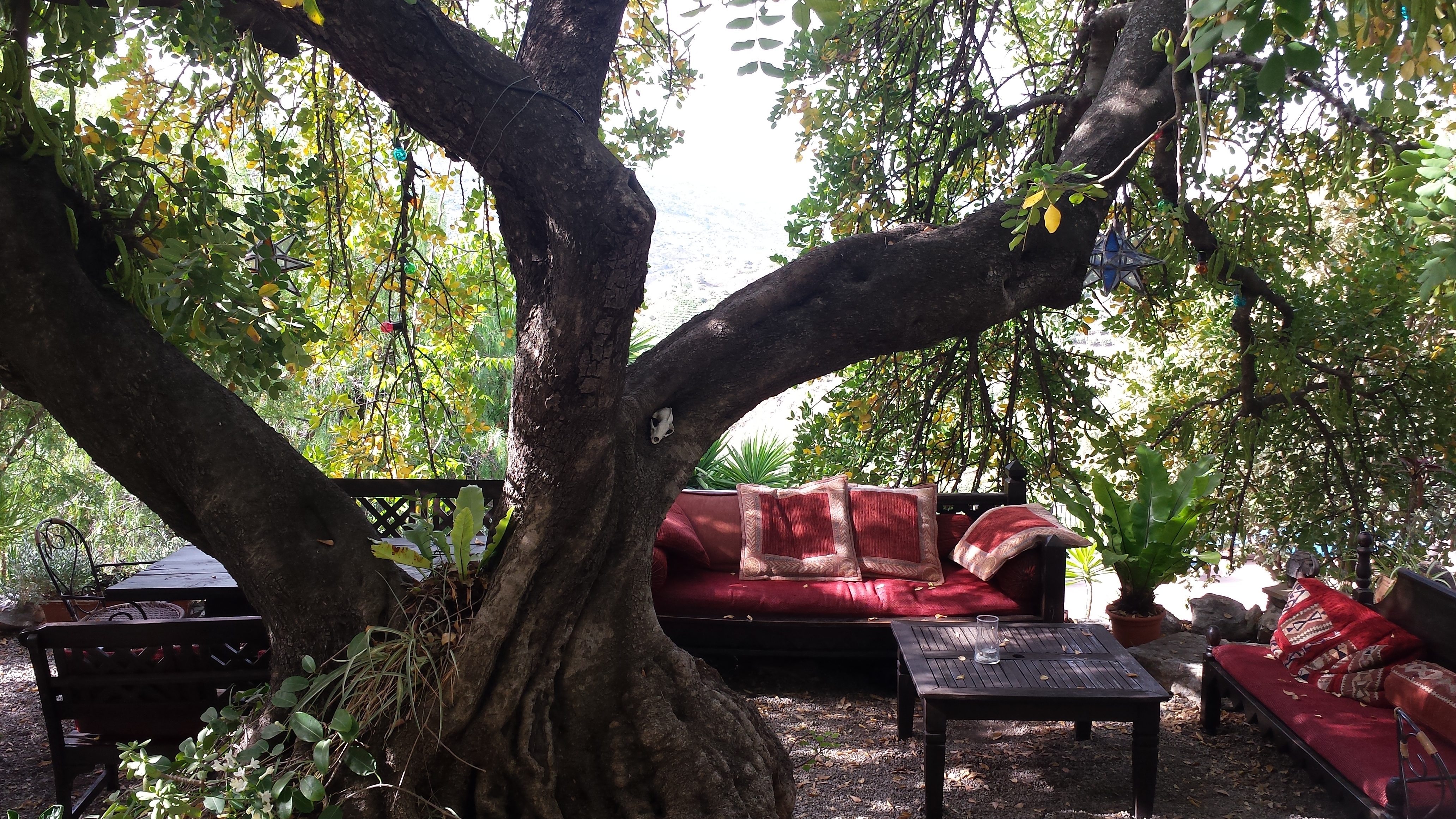 Through visualisations and thought-showers, we explored how we could get beneath the surface of an idea – to dig deep and develop that idea into a story, a poem, or another piece of writing.
Through visualisations and thought-showers, we explored how we could get beneath the surface of an idea – to dig deep and develop that idea into a story, a poem, or another piece of writing.
 We thought about place and how we can connect characters to their environment; how we can get the most out of place and use it as an important element in our writing.
We thought about place and how we can connect characters to their environment; how we can get the most out of place and use it as an important element in our writing.  And then we looked at characters themselves and considered ways in which we could get to know them better.
And then we looked at characters themselves and considered ways in which we could get to know them better.
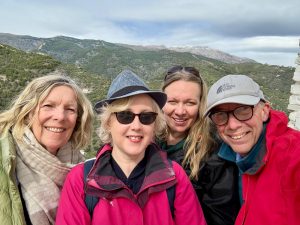 After a day off mid-week… some of us ventured into nearby Competa to look around the village and have lunch, some went to the seaside, and some stayed at the finca to relax, chill, maybe write some more…
After a day off mid-week… some of us ventured into nearby Competa to look around the village and have lunch, some went to the seaside, and some stayed at the finca to relax, chill, maybe write some more…
 We then discussed ways of getting our deeper writing on to the page, by using internal thought, for example, and self-image.
We then discussed ways of getting our deeper writing on to the page, by using internal thought, for example, and self-image.
 In our final morning session of the week, we considered symbolism and re-thought some well-worn clichés, as well as constructing a poem from associations connected with a certain emotion.
In our final morning session of the week, we considered symbolism and re-thought some well-worn clichés, as well as constructing a poem from associations connected with a certain emotion.
 During the week. groups also created a collaborative piece, which were shared on our final day. There were some brilliant variations – including stories, flash fiction, a play, a song, a poem and more.
During the week. groups also created a collaborative piece, which were shared on our final day. There were some brilliant variations – including stories, flash fiction, a play, a song, a poem and more.
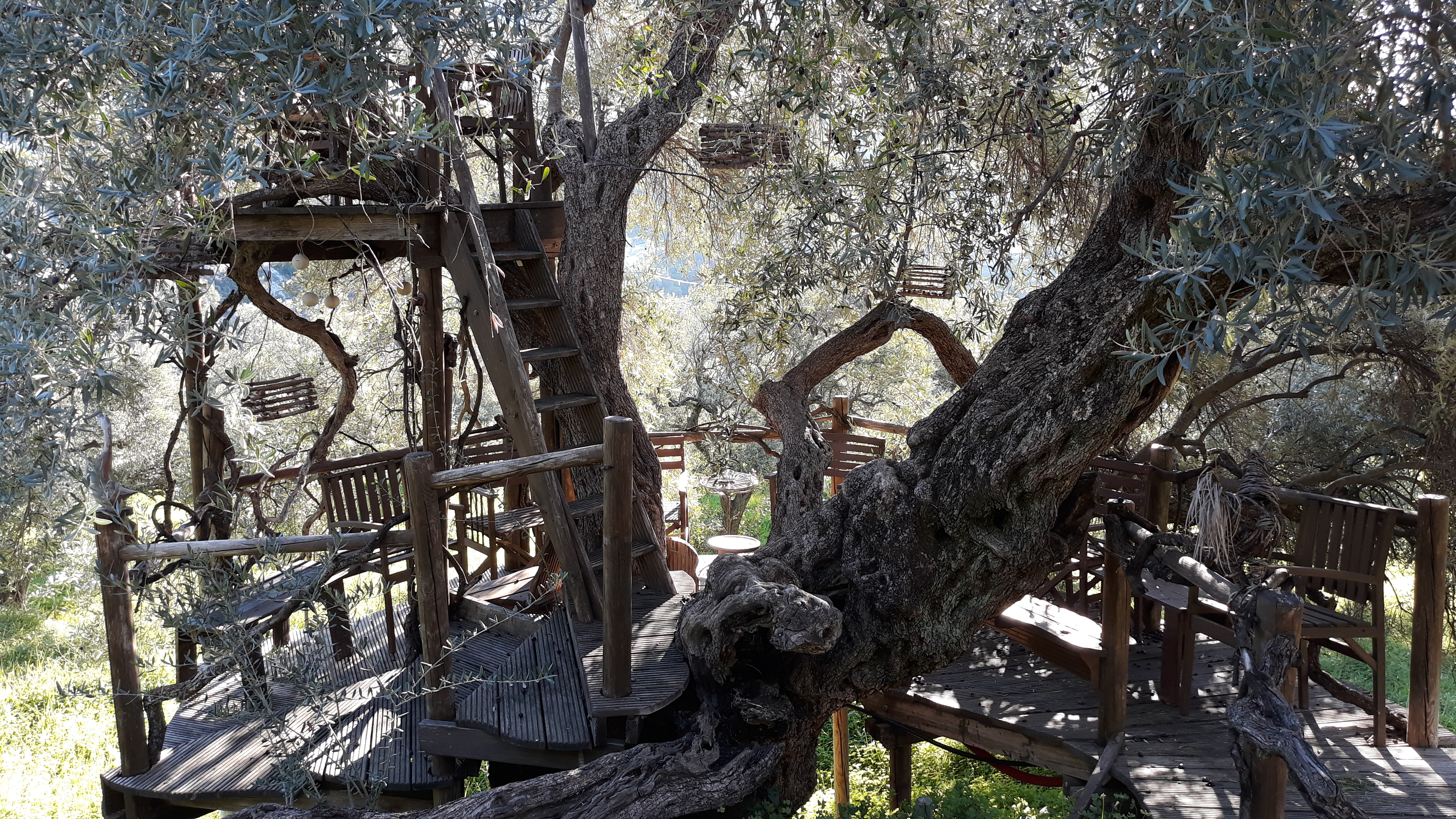 Both weeks were great fun. They included Spanish conversation with Keeley around the pool (in June) early morning pilates with Anju on the yoga deck, Elaine’s team quiz, Sheila’s lateral thinking, Rosemary and Catherine’s singing evening, and Keeley’s salsa dancing lesson. All optional of course, but all a fabulous addition to our weeks. Thank you all.
Both weeks were great fun. They included Spanish conversation with Keeley around the pool (in June) early morning pilates with Anju on the yoga deck, Elaine’s team quiz, Sheila’s lateral thinking, Rosemary and Catherine’s singing evening, and Keeley’s salsa dancing lesson. All optional of course, but all a fabulous addition to our weeks. Thank you all.
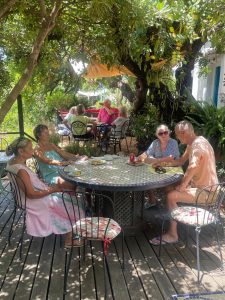
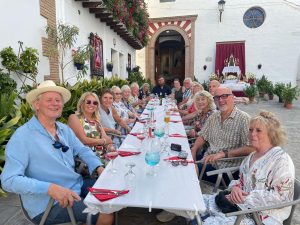 We enjoyed delicious meals at the finca and we also went out to some lovely restaurants in Canillas and Competa.
We enjoyed delicious meals at the finca and we also went out to some lovely restaurants in Canillas and Competa.
In March my new hardback of ‘The Italian Flame’ was published and Sue and Gordon and members of the writing group organised a celebration including a cake beautifully decorated by Gordon. 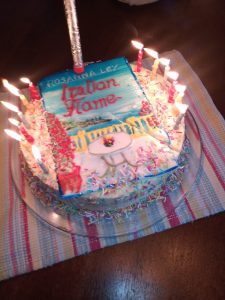 What an amazing thing to do. It blew me away… 🙂
What an amazing thing to do. It blew me away… 🙂
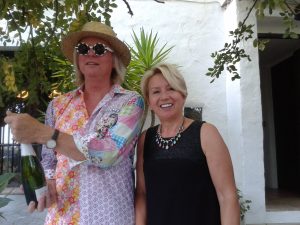 In June, we sadly said goodbye to Sue and Gordon Kind who have run the finca so magnificently for so many years and also given us ‘Gordon’s Desert Island Discs’ which we have so enjoyed.
In June, we sadly said goodbye to Sue and Gordon Kind who have run the finca so magnificently for so many years and also given us ‘Gordon’s Desert Island Discs’ which we have so enjoyed.
But we are looking forward to meeting Donna and Jaime who will be taking on the business and we will be continuing our writing holiday with them. (And Sue and Gordon have promised to come back as day students…)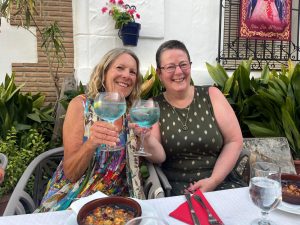
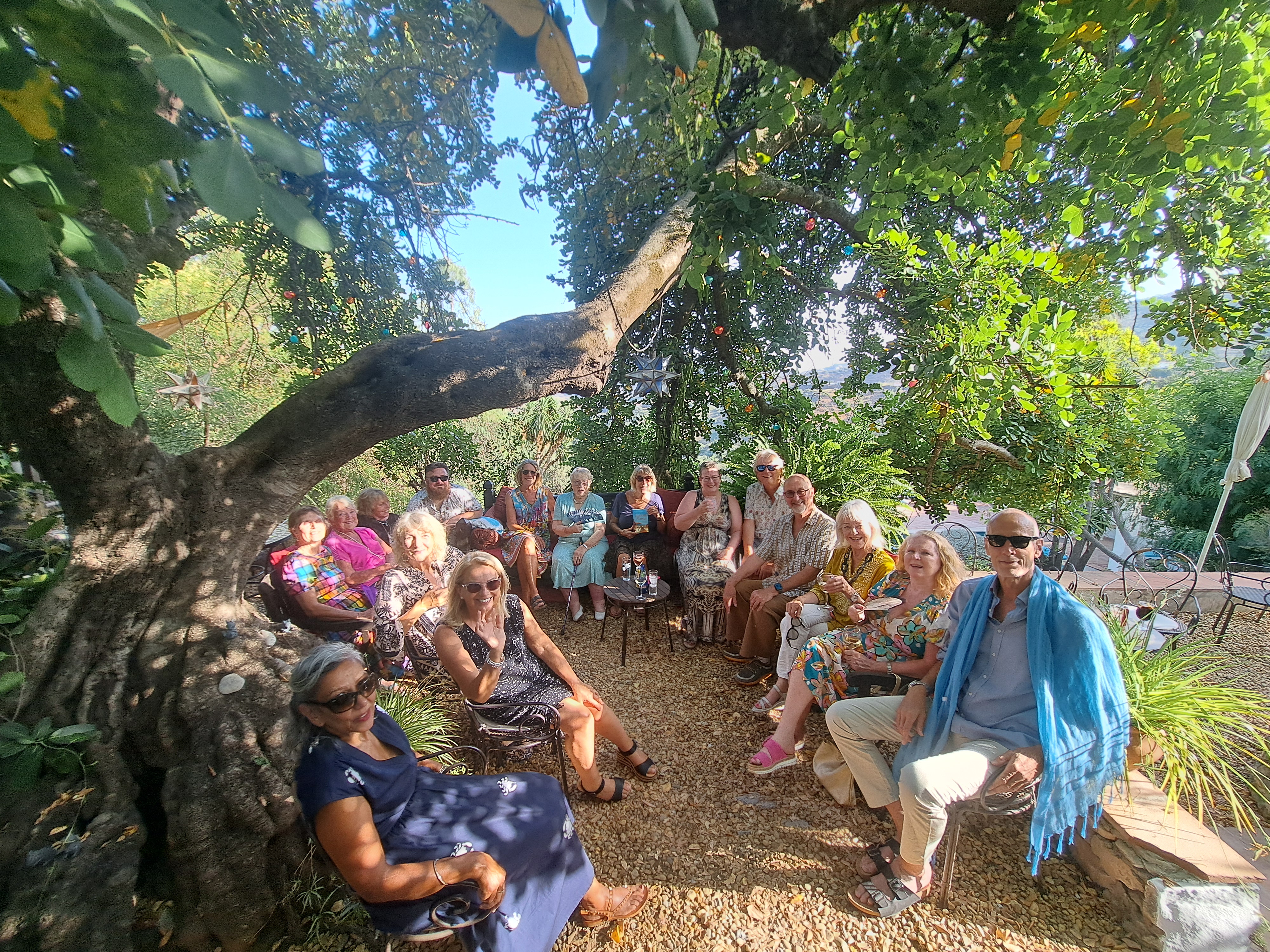 Roll on 2026….
Roll on 2026….
Summer Scorchers 2025
Here are some of the scorchers I have been enjoying this summer…
The Lost Bookshop by Evie Woods ****
Three strangers – Opaline, Martha and Henry come together in this warm and compelling dual time-line novel.
Martha is escaping an abusive relationship when she discovers an unexpected sanctuary, working for Mrs Bowden as her housekeeper. But there is something unusual about her employer, and something unusual about Martha’s lodgings too – her bedroom seems to be growing and changing into something it might have been in the past…
Meanwhile, Henry is searching for The Lost Bookshop of his academic research, when he comes across Martha, and an unlikely friendship develops. They can help one another, it seems, but are they ready to?
Together, they discover more about the bookshop, and its proprietor Opaline who was a trail-blazer – fiercely independent and determined to escape an arranged marriage, at great personal cost.
The author weaves the personal journeys of all three characters and the two timelines together into a magical storyline. Highly recommended.
Shy Creatures by Clare Chambers *****
Another gorgeous read from Clare Chambers.
Like the superb ‘Small Pleasures’, the 1950s setting is impeccably evoked, down to the smallest detail. Helen works as an art therapist in a psychiatric hospital/ welfare centre; she is unmarried and involved with Gil, a charismatic doctor, who holds some radical new ideas about psychiatric care.
When a new patient, William Tapping, arrives at Westpark, a ‘hidden man’ who has always lived with his aunts, never ventures outside and is not registered to live at that address, Helen becomes involved in solving the mystery. Why did William become so reclusive – what happened in his life to make it necessary for him to hide away?
William gradually responds, showing a remarkable artistic talent, and with a lot of digging on Helen’s part, the story of his past slowly emerges. As she finds out more about William, Helen begins to question her own relationship with Gil and makes some personal discoveries of her own. Highly recommended. I loved it.
Broken Country by Clare Leslie Hall *****
This is a love story, but it is also so much more. It is an intense exploration of family relationships and it is about love, loss and human frailty.
Beth is only seventeen when she meets and falls in love with Gabriel. They enjoy a perfect summer together, but there are obstacles – they come from very different backgrounds and his mother is against the relationship. When Gabriel meets Louisa – clever, glamorous and rich – at Oxford, Beth fears that she might lose him.
After their break-up, Beth turns to lovely and reliable Frank, a farmer, and makes a life with him. They have a son, Bobby, and they work the farm with the help of Frank’s younger brother Jimmy. But when Gabriel and his son Leo return to the village, there is a shooting and everything changes. Someone is on trial for murder…
This book is so cleverly structured that the reader finds out the truth slowly. And it is only when we know everything that we can understand the actions of the characters. The book explores how it is possible to love two men at the same time – this is Beth’s fate – and it is the reason that tragedy strikes.
Very highly recommended. My book of the year so far.
James by Percival Everett ***+
The premis of this book – to give voice and identity to the unheard, those treated inhumanely as slaves, must be applauded. Despite this, I wasn’t gripped by it.
James (previously the slave known as Jim) is forced to become a runaway. With Huckleberry Finn, he has adventures, suffers ill treatment and philosophises about the nature of freedom and equality.
James has taught himself to read and like other slaves, he is able to speak fluently and not just in what he calls ‘slave language’ as the slave owners believe. His education, enables the author to satirise white behaviour in US society, along with all the nuances and glaring examples of racism, as we now understand it. This conceit, or contrivance by Everett felt heavy-handed and didn’t fully work in my opinion, although it was humorous and poignant in places.
It is however, a moving and thought-provoking read, full of action and dialogue, but also philosophy. Everett explores the relationships between black and white, between father and son, and between friends. He explores the nature of reading and writing, the balance of power and the need for everyone to have the right to tell his or her story. Because of this, everyone should probably read it.
The Last Time I saw You by Jo Leevers ****+
Georgie is about to become a mother when she sees someone’s picture in a news article; it is her own mother, who disappeared twenty years ago when Georgie was young. How could Nancy have abandoned her children? Georgie needs to know.
She contacts her estranged brother, Dan, with whom she used to be close, and together they set out to find her. All however, does not go to plan. Nancy has disappeared again. Can they find her and can Georgie get some answers to all her questions and re-establish her connection to her brother too?
As readers, like Georgie and Nancy our two points of view, we are caught between their new lives and the past. Is there a way of finding peace? Have they all been hurt too much to recover as a family and re-unite? We need to know, because Leevers has made us emotionally invested in her story. It is a story of love, loss and abuse. It’s brilliantly written and I couldn’t put it down. Highly recommended.
News
- Stormy Weather Reading
- Writing Beneath the Surface
- Summer Scorchers 2025
- The Feelgood Festival in Oslo
- Winter Hotties 2024/5
- Autumn Reading 2024
- Summer Reading 2024
- Finca Writing in March and June 2024
- My Spring Fiction 2024
- Themes and Schemes
- Top Winter Titles
- Autumn Leaves
- Summer Pages
- Spring Reading Delights
- Writing at the Finca in March
- Winter Chillers
- Autumn Pages
- Researching in Liguria
- Writing at the Finca in July
- Summer Sizzlers 2022
- Spring Reading 2022
- Flash Fiction Slam at BAC
- Writing at the Finca March 2022
- I Am Editing…
- It’s getting colder – time for some late Autumn goodies…
- Writing and Researching during a Pandemic
- Summer Sizzlers – my summer reading
- The Seville Orange and Almond Cake
- The Writing Walk
- Winter Reading Hotties
- Returning to Belle-ile-en-mer
- The Creation of a New World (to Everyone who Does It)
- Autumn Warmers
- Research in the Walled Gardens
- Late Summer Reading…
- Writing Cinematically
- June News
- Spring Reading (In Lockdown…)
- Returning to Mandalay
- Writing at the Finca in February
- Winter Reading
- Oranges in Seville
- Autumn Reading
- Portishead Visit
- An Italian Supper
- Spirit of Place
- Writing at Finca el Cerrillo – seven reasons for a group leader to host a Writing Holiday
- Summer Reading – 8 books to add to your summer tbr pile
- Self-Promotion – how ready are you to shout about it?
- Featuring The Lemon Tree Hotel